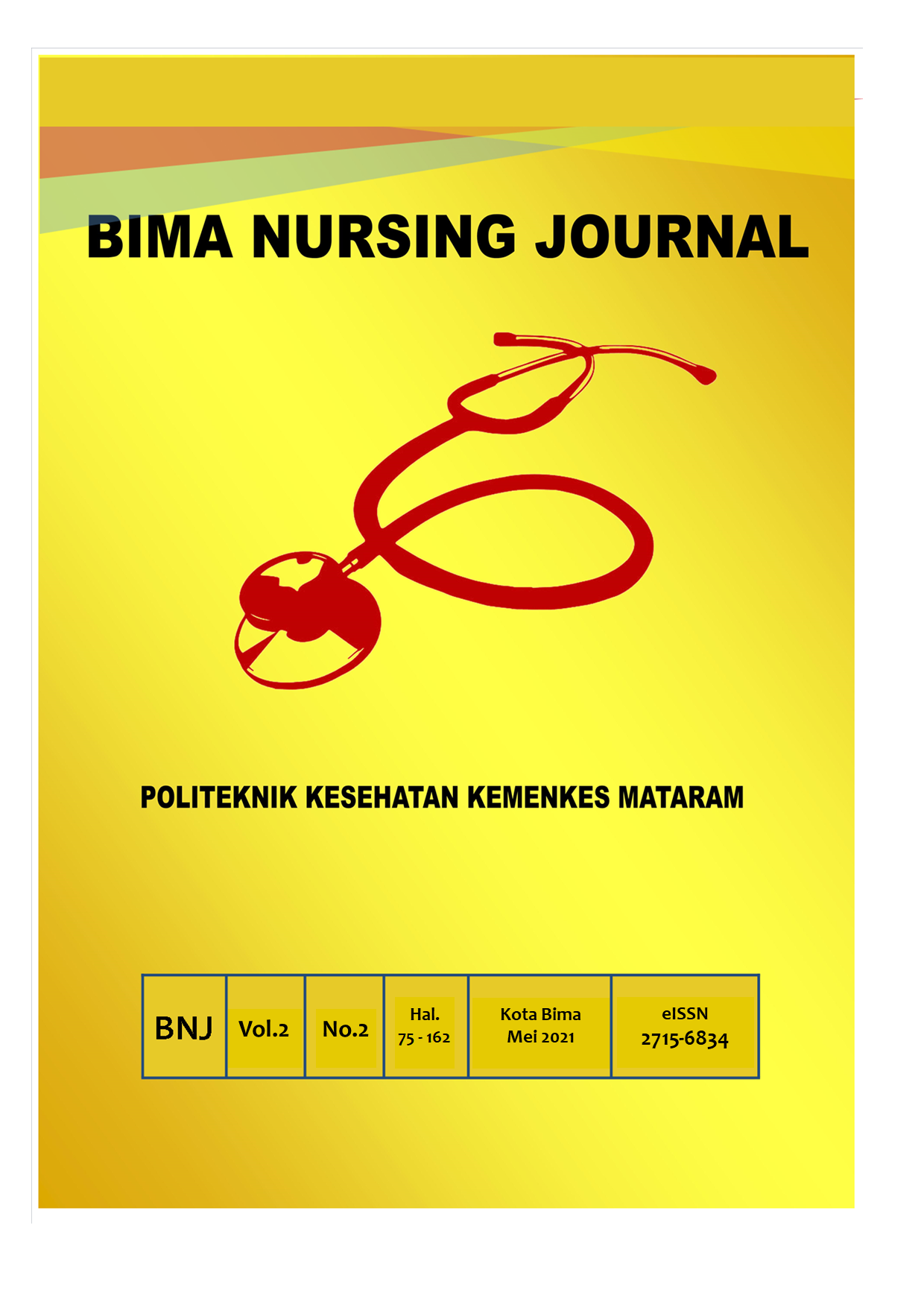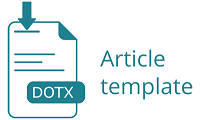Analisis Perubahan Tekanan Darah dan Denyut Nadi Pasien yang Mengalami Asthma Attack di Instalasi Gawat Darurat
DOI:
https://doi.org/10.32807/bnj.v2i2.662Keywords:
Asthma Attack, Tekanan Darah, NadiAbstract
Asthma Attack merupakan kondisi serius penderita Asma yang mengalami eksaserbasi dimana gejala asma memburuk dan mendadak mempersempit saluran nafas sehingga penderita kesulitan bernafas. Penelitian dilakukan untuk menganalisis perubahan tekanan darah dan denyut nadi penderita Asma saat mengalami Asma Attack di IGD RSUD Dr. H. Moch. Ansari Saleh Banjarmasin. Metode penelitian ini kuantitatif dengan jenis penelitian deskriptif dengan rancangan Cross Sectional. Subyek populasi pasien yang mengalami serangan asma di IGD, sampel sebanyak 70 orang dengan teknik simple random sampling, dianalisis menggunakan metode deskriptif. Hasil penelitian tekanan darah dari saat Asthma Attack menunjukkan nilai mean tekanan darah sistolik pasien 118 mmgHg, nilai median 120 dan nilai modus 100 mmgHg dengan standar deviasi 20,008. Nilai tekanan darah diastolik menunjukkan 83 mmgHg, nilai median 80 dan nilai modus 80 mmgHg dengan standar deviasi 12,533. Adapun nilai denyut nadi pasien adalah rata-rata 100 x/menit, nilai median 95,5 mmhg, nilai modus 80 dengan standar deviasi 21,215. Perubahan tekanan darah dan nadi ini menjadi penting bagi perawat karena perubahan tersebut merupakan parameter kondisi kegawatdaruratan sistem kardiaovaskular pasien asma yang sedang mengalami Asthma Attack. Pemantauan serius di unit gawat darurat harus dilakukan untuk mencegah pasien jatuh ke kondisi yang lebih buruk.References
American Lung Association. (2018). Asthma Risk Factors | American Lung Association. https://www.lung.org/lung-health-and-diseases/lung-disease-lookup/asthma/asthma-symptoms-causes-risk-factors/asthma-risk-factors.html
Badan Penelitian dan Pengembangan Kesehatan. (2018). Hasil Utama RISKESDAS 2018.
Bhargava, H. D. (2020). How Are Blood Pressure and Asthma Related? https://www.webmd.com/asthma/asthma-blood-pressure
Global Asthma Network. (2018). The Global Asthma Report. In Auckland, New Zealand (Vol. 5, Issue 3). https://doi.org/ISBN: 978-0-473-29125-9r978-0-473-29126-6 (ELECTRONIC)
Kotwani, A., & Chhabra, S. (2017). Effect of patient education and standard treatment guidelines on asthma control: an intervention trial. WHO South-East Asia Journal of Public Health, 1(1), 42. https://doi.org/10.4103/2224-3151.206913
Laksono, S. P., Qomariyah, & Purwaningsih, E. (2011). Persentase Distribusi Penyakit Genetik dan Penyakit Yang Dapat Disebabkan Oleh Faktor Genetik Di RSUD Serang. PharmaMedika, 13(2), 267–271.
Lorensia, A., Yulia, R., & Wahyuningtyas, I. S. (2017). Hubungan Persepsi Penyakit (Illness Perception) dengan Kontrol Gejala Asma pada Pasien Rawat Jalan. Media Pharmaceutica Indonesiana (MPI), 1(2), 92. https://doi.org/10.24123/mpi.v1i2.191
Mayo foundation for medical education. (2015). Asthma - Symptoms and causes - Mayo Clinic. In Mayo Clinic. https://doi.org/10.1017/S0307883307003094
Medline Plus. (2019). Asthma in Children Asthma Symptoms MedlinePlus.
NIH. (2018). COPD | National Heart, Lung, and Blood Institute (NHLBI). https://doi.org/10.7589/0090-3558-46.3.977
Papiris, S. S., Kotanidou, A. A., Malagari, K. K., & Roussos, C. C. (2002). Clinical review: severe asthma. Critical Care (London, England), 6(1), 30–44.
Sari, N. P. W. P. (2013). Asma: Hubungan Antara Faktor Risiko, Perilaku Pencegahan, Dan Tingkat Pengendalian Penyakit. Jurnal Ners LENTERA, 1(September), 30–41.
Schanen, J. G., Iribarren, C., Shahar, E., Punjabi, N. M., Rich, S. S., Sorlie, P. D., & Folsom, A. R. (2005). Asthma and incident cardiovascular disease : the. i, 633–638. https://doi.org/10.1136/thx.2004.026484
Sihombing, M., Alwi, Q., & Nainggolan, O. (2010). Faktor Faktor Yang Berhubungan Dengan Penyakit Asma Pada Usia ≥ 10 Tahun Di Indonesia (Analisis Data Riskesdas 2007). Jurnal Respirologi Indonesia, 30(No. 2), 85–91. http://jurnalrespirologi.org/wp-content/uploads/2012/04/85-91-APRIL-VOL_30-NO_2-2010.pdf
Utami, N. M. S. N. (2013). Hubungan Antara Dukungan Sosial Keluarga dengan Penerimaan Diri Individu yang Mengalami Asma. Jurnal Keperawatan Komunitas, 1(1), 12–21.
WHO. (2016). WHO | Asthma. In Who. http://www.who.int/en/news-room/fact-sheets/detail/asthma
Zolotareva, O., Saik, O. V., Königs, C., Bragina, E. Y., Goncharova, I. A., Freidin, M. B., Dosenko, V. E., Ivanisenko, V. A., & Hofestädt, R. (2019). Comorbidity of asthma and hypertension may be mediated by shared genetic dysregulation and drug side effects. In Scientific Reports (Vol. 9, Issue 1). https://doi.org/10.1038/s41598-019-52762-w
Downloads
Published
How to Cite
Issue
Section
License
The author who submits the manuscript does so with the understanding that if accepted for publication, the copyright of the article will be submitted to the Bima Nursing Journal Unit Research and Community of Polytechnic of Mataram as the publisher of the journal.
Copyright includes the exclusive right to reproduce and transmit this article in all forms and media, including reprints, photographs, microfilms, and other similar reproductions, as well as its translations. Reproduction of any part of this journal, its storage in the database and its transmissions by any form or media, such as electronic, electrostatic and mechanical copies, photocopies, recordings, magnetic media, etc. shall be permitted only by written permission of the Bima Nursing Journal Unit Research and Community of Polytechnic of Mataram.
The Bima Nursing Journal Unit Research and Community of Polytechnic of Mataram, Editor In Chief and Team Editor strive to ensure that no data or statements are false or misleading, published or published. in the journal.
Â
Â
Every accepted manuscript should be accompanied by the "Copyright Transfer Agreement" prior to the article publication.
Â






